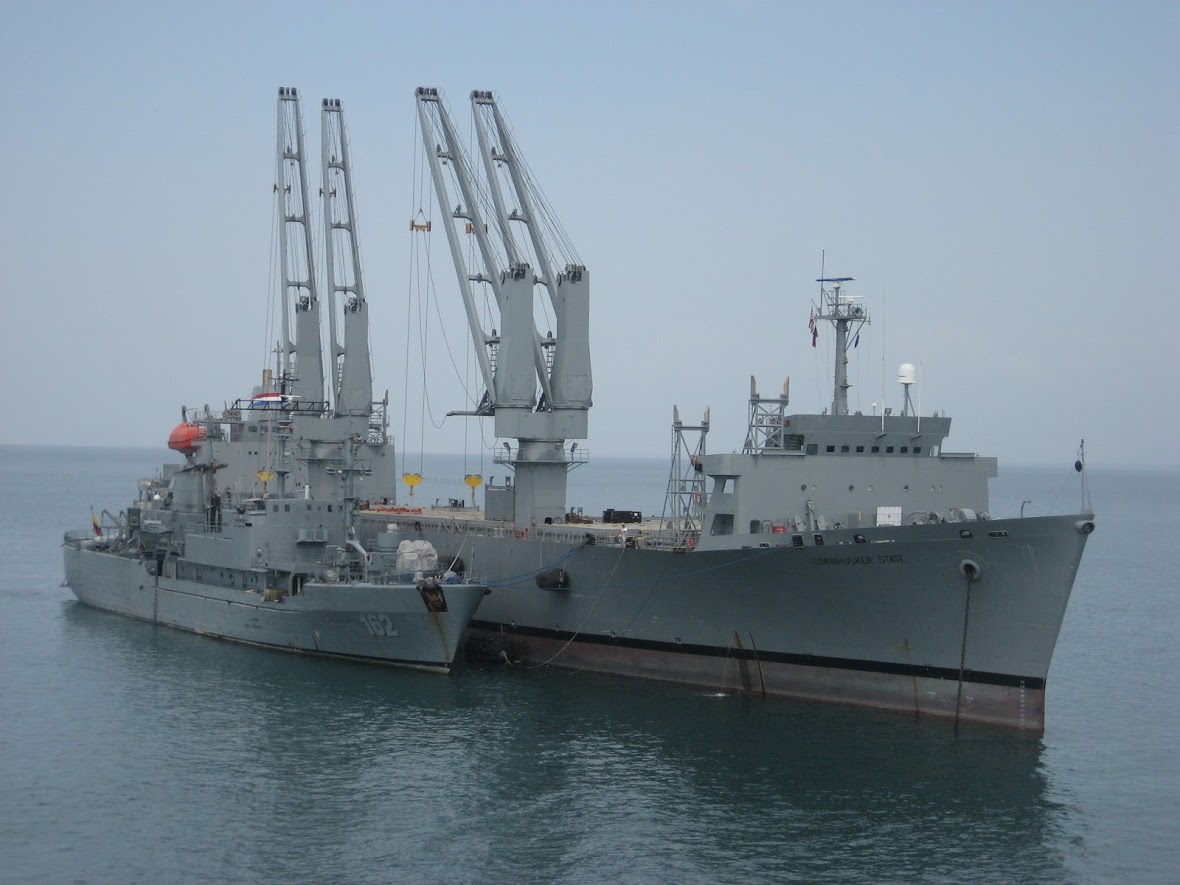
This post was updated to properly identify the Ready Reserve Force. An earlier version included an incorrect title of the force.
THE PENTAGON — U.S. Transportation Command started the largest turbo activation of the Ready Reserve Force since 2003 to stress-test the military’s ability to quickly deploy the cargo ships required for a massive troop movement.
The no-notice exercise involves 28 vessels from the Military Sealift Command (MSC) and the U.S. Department of Transportation’s Maritime Administration (MARAD). The ships are located on the Atlantic, Pacific and Gulf Coasts.
The ships have five days to be fully crewed and set sail for a what is typically between three and five days to test how they operate, Sal Mercogliano, an associate professor of military and maritime history at Campbell University in North Carolina, told USNI News. Most of the time, the Ready Reserve Force remains in port with a skeleton crew aboard performing maintenance to keep the vessels ready to activate.
“A test like this is a good thing, especially since the last time a test this big was over a decade ago,” Mercogliano said.
Turbo activations occur several times a year, but usually involve at most a couple of ships, Mercogliano said. What set’s this exercise apart is its scale – involving 28 ships at once.
“There are only about 180 unlimited tonnage vessels left in the U.S.,” Mercogliano said.
When just one or two ships are involved, Mercogliano said MARAD could pull crews from other ships to fill out the staffing needs for the vessels identified from the exercise. Using 28 ships, each with between 30 and 40 crewmembers, involves pulling in nearly 1,000 merchant marines.
The turbo activation is intended to provide military planners with a “better assessment of the readiness of U.S. sealift forces than can be accomplished with fewer activations. This scale will also stress the underlying support network involved in maintaining, manning and operating the nation’s ready sealift forces,” according to a statement released by TRANSCOM.
This type of large exercise had been hinted about since March, when retired Rear Adm. Mark Buzby, the administrator of MARAD, appeared before the House Armed Services readiness and seapower and projection forces subcommittees, Mercogliano said.
At the time, Buzby told lawmakers both the Ready Reserve Force and the crews operating the vessels were aging. New ships are needed and the merchant marine needs to retain young crewmembers.
Mercogliano suspects the exercise is occurring now to give Buzby critical information before he heads back to Capitol Hill to provide lawmakers with an updated status of the Ready Reserve Force. Congressional staffers are already discussing Fiscal Year 2021 funding levels. Mercogliano said this is a good time to gauge the readiness of the fleet and for MARAD and TRANSCOM officials to push for funding.
TRANSCOM started doing the Turbo Activation exercises in 1994, following what Mercogliano described was a plagued Ready Reserve Force activation in 1990. As the U.S. military ramped up preparations for Operations Desert Shield and Desert Storm – what would become known as the first Gulf War following Iraq’s invasion of Kuwait – 78 of 96 Read Reserve Force ships were reactivated and engaged in sealift operations, according to a May 2018 Congressional Budget Office report.
“Most of the first 45 ships reactivated did not meet their reactivation schedules, primarily because they had deteriorated and were in poor condition,” the CBO report states.
Mercogliano was part of that activation and said some problems involved catastrophic engine failures, requiring vessels loaded with gear to be towed into port. In 2003 large-scale activation ran much smoother, he said.
“In contrast to what had happened a decade earlier during Operations Desert Shield and Desert Storm, 37 of the 40 ships met their reactivation timelines; the three that did not were identified as having major deficiencies and needing major repairs at the time of reactivation,” the CBO report states.
MARAD and TRANSCOM officials will evaluate the readiness of the reserve fleet and its ability quickly mobilize to deliver personnel and material overseas. Mercogliano said.
“This is measuring your ability to get to the fight,” Mercogliano said.





